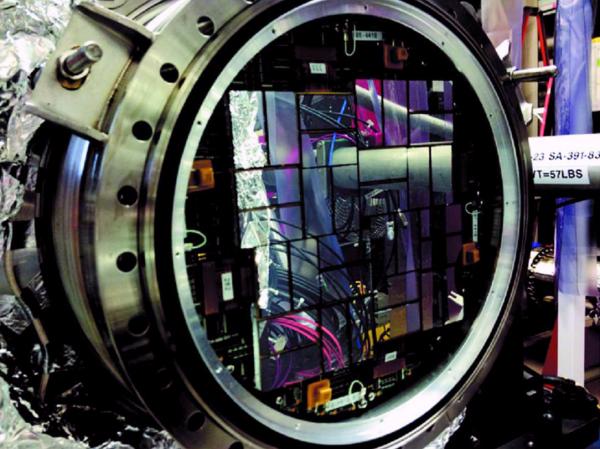CSPAD (in CXI)
CSPAD (Cornell–SLAC Pixel Array Detector)

The first detector specifically developed for use at LCLS is the Cornell–SLAC Pixel Array Detector (CSPAD). This detector is the result of a collaboration between Cornell University and SLAC National Accelerator Laboratory.
The CSPAD 140K, 560K, and 2.3M are used for both soft and hard X-ray applications. In instances where the detector needs to cover a large cross sectional area, the CSPAD 2.3M, with its large active sensor area, may be extremely useful. For further expansion of the active area beyond that provided by the 2.3M, multiple CSPADs can be install and read in-sync to cover a large cross section that cannot be covered by a single detector.
CSPAD: Camera Specs
- Total length (tubings, connectors included): 14.5 in (36.8 cm)
- Weight: 2.4 lb (1.09 kg)
- Room temperature operation: (nominal range: 5-30 °C)
- # of Pixels: 140K, 560K, and 2.3M pixels
- Modules active area: (4 x 4 cm2)
- Quantum efficiency vs. energy range: See figure
CSPAD Characteristics and Measured Performance
CSPAD | High Gain | Low Gain |
|---|---|---|
Pixel per ASIC | 194 x 185 | |
Pixel size (μm) | 110 | |
Noise r.m.s. (eV) | 1000 | 3500 |
Max signal (8 keV | 350 | 2700 |
Frame rate (Hz) | 120 | |
Sensor thickness (μm) | 500 | |
CSPAD Resources
- CSPAD Troubleshooting Guide (SLAC Login needed)
- Hands-on Tutorial: CSPADs: how to operate them, which performance to expect and what kind of features are available (Video1, Video2)
- CSPAD FAQ - Philip Hart (SLAC) (Video)
Analysis Tools for the CSPAD Detectors
- How to run the offline_ami program:
- ssh pslogin
- ssh psana
- cd /tmp/reg/g/pcds/dist/pds/ami-current/build/ami/bin/x86_64-linux-opt/offline_ami -p
- /reg/d/psdm/cxi/cxij5116/
- LCLS Data Analysis
- Detector Calibration and Management
- CSPAD common mode corrections in hybrid gain mode
